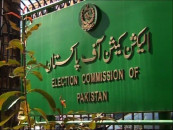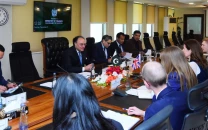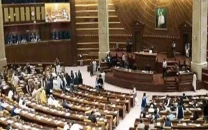Familial glory: In Chitral and Swat, what’s in a name?
Influence of the royal family seems to be waning in Chitral, well-mannered royals of Swat still loved by their people

Another son of Miangul Amirzeb, Shaharyar Amirzeb, contested from PF-81 Swat-II in the 2008 elections but could not win.
The partition of the subcontinent was, at once, a birth and an abortion. It not only carved out two new countries, India and Pakistan, but also led to the demise of over 500 princely states. The former states of Dir, Swat and Chitral, situated in the Malakand division, acceded to Pakistan.
Today, the royal family of Chitral seems to be loosening its political grip, whereas Swat’s royal family is still deeply respected by its populace.
Chronicles of Chitral
In this far northern district of Khyber Pakhtunkhwa, the great Katoor family’s rule came to an end after a dispute erupted between ruler Mehtar Muzaffarul Mulk and his brothers in 1949.
According to Dr Inayatullah Faizi, an academic and columnist, the princes’ uncle, Ataleeq Sarfarz Shah, consolidated his power, and the state remained under his sway for 20 years. In 1954, a powerful advisory council was established. This body continued to rule over the district until 1969, when the state was formally merged into Pakistan.
The one man responsible for the reemergence of the royals was Shahzada Mohyuddin. He entered politics on the Pakistan Peoples Party (PPP) platform in 1972 and is credited with ending differences within the royal family. Using his offices with Bhutto, he rallied extended offshoots of the family around his persona, and created even a constituency for himself.
“The royal family’s role in politics was completely based on Mohyuddin’s efforts,” says Faizi.
In a different vein, Hidayatur Rehman, an independent researcher, claims that the rise of Mohyuddin was a result of the advisory council’s mismanagement during its rule. Locals were forced to pin their hopes on the royal family, he says.
Mohyuddin’s political trajectory is not all smooth sailing. He lost several times – as chairman of the district council in 1979, against Nusrat Bhutto in 1981, in 1990 against PPP’s Ghafur Shah – but he won multiple times over, as well.
Today, his younger son, Shahzada Khalid Pervez, is contesting elections for PK 89 Chitral I. He faces tough competition, with four members of the royal family also contesting the seat -- Khalid Pervez, Shahzada Gul, Amanur Rehman and Mohammad Kausar Chughtai.
No longer united, it seems that the royal family’s role is, indeed, weakening.
Stories of Swat
In the past, Swat was considered a prosperous and peaceful state, more developed than its surrounding areas.
“The visionary rulers of Swat state, particularly, Miangul Jahanzeb Wali, made it one of the most developed states at that time,” says Sadullah Khan, an old resident of Saidu Sharif.
Haji Rasool Khan, the assistant private secretary of the last ruler of Swat, agrees.
“Though there was a complete autocracy, Swat was ruled with a vision,” he says.
According to Haji Rasool, the merger of Swat with Pakistan on July 28, 1969, led to great uneasiness amongst the people.
“The last ruler of Swat, Wali sahib, was a principled man. Even after the merger, he would meet with the public daily and listen to their problems,” said Nisar Ahmad Khan, personal attorney of the royal family.
According to Nisar, the popularity of the family is evident by the ease and frequency with which family members won elections. The family’s victories during polls are not few or far between.
After the 1969 merger, different royal members contested elections on the platforms of various parties. Politically, they were divided into two major camps: the Pakistan Muslim League and the PPP.
Miangul Aurangzeb, crown prince of the Swat state, remained a member of the West Pakistan National Assembly from 1956. He was once again nominated to the NA in 1962, 1965, 1970 and 1985. In 1997, he was made governor of Balochistan.
Similarly, Prince Miangul Amirzeb won NA-21 in 1977, and Shehzada Aman-i-Rome won NA-29 in 1988. Both ran on PPP tickets.
Miangul Adnan Aurangzeb, the son of Miangul Aurangzeb, served as a member of parliament from 2004 to 2008. His son, Asfandyar Amirzeb, was also very popular. Unlike his father, he started his political career with PML-N and was elected as MPA in 1997.
Unfortunately, he was killed in a roadside bomb blast in 2007, during his election campaign.
Another son of Miangul Amirzeb, Shaharyar Amirzeb, contested from PF-81 Swat-II in the 2008 elections but could not win.
Today, he is the only candidate from the royals to be a part of the 2013 elections. He is contesting PK-81 on the PML-N platform.
“Being an only candidate from the royal family, he will definitely have the support of the people,” says political analyst Bahrudin Khan. “He will certainly give a tough time to the other candidates.”
Published in The Express Tribune, April 24th, 2013.



















COMMENTS
Comments are moderated and generally will be posted if they are on-topic and not abusive.
For more information, please see our Comments FAQ